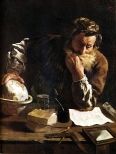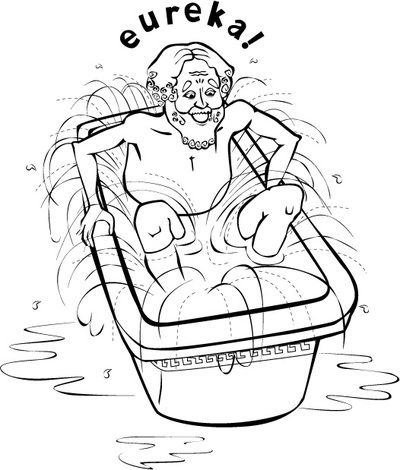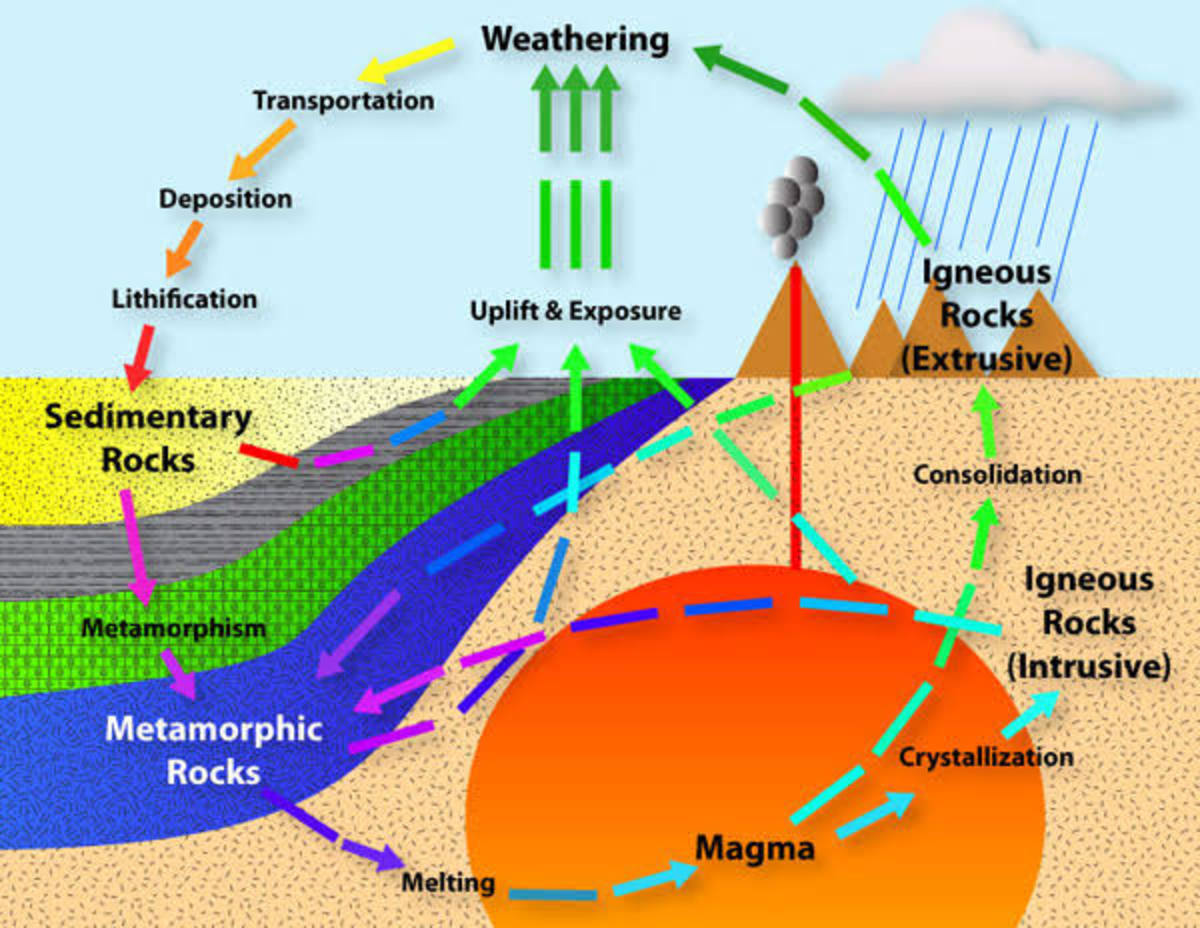Archimedes of Syracuse

Archimedes, The Gifted Greek Mathematician
Greek mathematician, scientist and inventor Archimedes regarded as one of the leading scientists and inventor of all time though there are very much a few details of his life mentioned. He made a lot of greatest contribution in science, mathematics, astronomy, mechanics and engineering for his discovery of the relation between the surface and the volume of a sphere and its circumscribing cylinder.
He is known for his formulation of hydrostatic principle commonly known as "Archimedes Principle" and at the same time he is the first who recognize and used the power of lever. Surely, he is one of the gifted mathematician that ever exists in his era.
Life & Death of Archimedes of Syracuse
A Closer Look.
Archimedes of Syracuse was born c. 287 BC in the seaport city of Syracuse, Sicily, at that time a colony of Magna Graecia. The date of birth is based on a statement by the Byzantine Greek historian John Tzetzes that Archimedes lived for 75 years. In The Sand Reckoner, Archimedes gives his father's name as Phidias, an astronomer about whom nothing is known. Plutarch wrote in his Parallel Lives that Archimedes was related to King Hiero II, the ruler of Syracuse. A biography of Archimedes was written by his friend Heracleides but this work has been lost, leaving the details of his life obscure. It is unknown, for instance, whether he ever married or had children. During his youth Archimedes may have studied in Alexandria, Egypt, where Conon of Samos and Eratosthenes of Cyrene were contemporaries. He referred to Conon of Samos as his friend, while two of his works (The Sand Reckoner and the Cattle Problem) have introductions addressed to Eratosthenes.
Archimedes is generally considered to be the greatest mathematician of antiquity and one of the greatest of all time. He used the method of exhaustion to calculate the area under the arc of a parabola with the summation of an infinite series, and gave a remarkably accurate approximation of Pi. He also defined the spiral bearing his name, formulas for the volumes of surfaces of revolution and an ingenious system for expressing very large numbers.
Archimedes died c. 212 BC during the Second Punic War, when Roman forces under General Marcus Claudius Marcellus captured the city of Syracuse after a two-year-long siege. According to the popular account given by Plutarch, Archimedes was contemplating a mathematical diagram when the city was captured. A Roman soldier commanded him to come and meet General Marcellus but he declined, saying that he had to finish working on the problem. The soldier was enraged by this, and killed Archimedes with his sword. Plutarch also gives a lesser-known account of the death of Archimedes which suggests that he may have been killed while attempting to surrender to a Roman soldier. According to this story, Archimedes was carrying mathematical instruments, and was killed because the soldier thought that they were valuable items. General Marcellus was reportedly angered by the death of Archimedes, as he considered him a valuable scientific asset and had ordered that he not be harmed.
The last words attributed to Archimedes are "Do not disturb my circles", a reference to the circles in the mathematical drawing that he was supposedly studying when disturbed by the Roman soldier. This quote is often given in Latin as "Noli turbare circulos meos", but there is no reliable evidence that Archimedes uttered these words and they do not appear in the account given by Plutarch.
The tomb of Archimedes carried a sculpture illustrating his favorite mathematical proof, consisting of a sphere and a cylinder of the same height and diameter. Archimedes had proved that the volume and surface area of the sphere are two thirds that of the cylinder including its bases. In 75 BC, 137 years after his death, the Roman orator Cicero was serving as quaestor in Sicily. He had heard stories about the tomb of Archimedes, but none of the locals was able to give him the location. Eventually he found the tomb near the Agrigentine gate in Syracuse, in a neglected condition and overgrown with bushes. Cicero had the tomb cleaned up, and was able to see the carving and read some of the verses that had been added as an inscription.
Book on the Spotlight on Archimedes

Reader's Review:
The thought of a man running naked through the streets shouting with joy over a physical and mathematical discovery is one to warm the hearts of all who value knowledge. When Archimedes experienced this flash of joy, little did he know that his actions would become the genesis of a legend that would last for thousands of years. However, he should be remembered for so much more than that and several of his significant mathematical contributions are explored in this book.
It is really amazing to realize how close he was to inventing calculus 22 centuries ago, which was 18 before Newton and Leibniz. With notation that was minimally expressive, he was able to solve problems using a technique that demonstrates at least a rudimentary understanding of the concept of a limit. While many different problems can be solved using calculus, it only takes one breakthrough solution to demonstrate how it can be applied to so many of the others. It can be plausibly argued that algebraic and decimal notations would have been the tools that would have allowed him to overcome those last barriers. One can only speculate on how that would have changed history.
The book is not exhaustive and no attempt is made to make it that. Ten of his most significant discoveries are presented and the solutions are those of Archimedes, although modern notation is used. While the proofs are generally easy to follow, one is often left in awe as to how he thought of how to approach some of these solutions. The explanations are succinct, yet thorough, which is the signature of a solid storyteller.
Given the answers to the question posed in the title of this book, one can pose another that logically follows. Was Archimedes the greatest mind of all time? If the legends are correct, then the answer is probably yes. However, even if the unconfirmed stories are false, the mathematical and mechanical discoveries should make him a legend for more than one short stint of becoming a 'natural man.' -Charles Ashbacher
Archimedes' Discoveries | Inventions
• His invention of the water-screw, still in use in Egypt, for irrigation, draining marshy land and pumping out water from the bilges of ships.
• His invention of various devices used in defending Syracuse when it was besieged by the Romans. These include powerful catapults, the burning-mirror and systems of pulleys. It was his pride in what he could lift with the aid of pulleys and levers which provoked his glorious hyperbole "Give me a place to stand and I will move the earth". (This saying of Archimedes is even more grandly laconic in Greek, in which it transliterates as the eight word sentence "dos moi pou st kai kin tén gén". See the reference to T L Heath at the end of the following section.)
• His discovery of the hydrostatic principle that a body immersed in a fluid is subject to an upthrust equal to the weight of fluid displaced by the body. This discovery is said to have inspired his famous cry "Eureka" ("I have found it").
Archimedes' Mathematical Achievements | Contributions
He computed the area of a segment of a parabola. He used a most ingenious argument involving the construction of an infinite number of inscribed triangles which "exhausted" the area of the parabolic segment. This is a most beautiful piece of mathematics.
He computed the area of an ellipse by essentially "squashing" a circle.
He found the volume and surface area of a sphere. Archimedes gave instructions that his tombstone should have displayed on it a diagram consisting of a sphere with a circumscribing cylinder. C H Edwards (see reference below) writes how Cicero, while serving as quaestor in Sicily, had Archimedes' tombstone restored, and adds "The Romans had so little interest in pure mathematics that this action by Cicero was probably the greatest single contribution of any Roman to the history of mathematics."
He discussed properties of the "Archimedean spiral", which is defined as follows : the distance from a fixed point O of any point P on the spiral is proportional to the angle between OP and a fixed line through O. In his evaluation of areas involving the spiral he anticipated methods of the calculus which were not developed until the seventeenth century AD. He found the volumes of various "solids of revolution" obtained by rotating a curve about a fixed straight line.
Eureka! is a Greek word meaning "I have found it" as an exclamation used as an interjection to celebrate a discovery.

Archimedes Books on Amazon
Give me a place to stand, and I shall move the world...
-Archimedes of Syracuse
Quick, what do you think of Archimedes?
Archimedes Links
- Archimedes Palimpsest
The Archimedes Palimpsest is a manuscript of unique importance to the history of science. This tenth century manuscript is the unique source for two of ... - Archimedes and the Computation of Pi
A page that contains links to www information on Archimedes and an interactive applet that illustrates how he estimated Pi. - Archimedes
Student-written profile introduces the thinker and his contributions to the world of math. - Acorn Archimedes - Wikipedia, the free encyclopedia
The Acorn Archimedes was Acorn Computers Ltd's first general purpose home computer based on their own 32-bit ARM RISC CPU. The name is also commonly used to ... - "Archimedes"
Although his main claim to fame is as a mathematician, Archimedes is also known for his many discoveries and inventions in physics and engineering, ... - Archimedes Home page
Archimedes is a set of tools, including mesh generators and a prototype parallelizing compiler, for performing unstructured finite element simulations. ... - BBC - History - Archimedes (c.287 - c.212 BC)
Archimedes was a Greek mathematician, philosopher and inventor who wrote important works on geometry, arithmetic and mechanics. - Archimedes - we're back - Archimedes - The Open CAD
After a lot of work, some news and no release, we're back on full speed (or almost) with Archimedes' new version. - The Archimedes Project
Seeks to promote equal access to information for individuals with disabilities by influencing the early design stages of tomorrow's computer-based ... - Archimedes
Archimedes was a mathematician and inventor from ancient Greece best known for his discovery of the relation between the surface and volume of a sphere and ... - Archimedes Systems
Archimedes Systems is a premier provider of leading edge personal financial planning decision support tools for the financial services industry. - Archimedes' Lever
The Works of Archimedes with the Method of Archimedes, edited by T. L. Heath, Dover Publications, Inc., New York, 1953, p. xix. ... - PUZZLES. Can you believe it?
Smart games for puzzle fans, teachers, trainers and facilitators: enjoy making and solving puzzles - optical illusions - tessellations - geometric ... - Archimede's Principle
In 212 B.C., the Greek scientist Archimedes discovered the following principle: an object is immersed in a fluid is buoyed up by a force equal to the weight ... - Archimedes' principle - Infoplease.com
Archimedes' principle, principle that states that a body immersed in a fluid is buoyed up by a force equal to the weight of the displaced fluid. ... - Archimedes of Syracuse
Archimedes, the greatest mathematician of antiquity, made his greatest contributions in geometry. His methods anticipated the integral calculus 2000 years ... - Submarines: How They Work - Archimedes' Principle
Archimedes' principle is the law of buoyancy. It states that "any body partially or completely submerged in a fluid is buoyed up by a force equal to the ... - The Golden Crown (Introduction)
Archimedes' solution to the problem, as described by Vitruvius, ... The largest known golden wreath from Archimedes' time is the one pictured from Vergina. ... - Archimedes -- Britannica Online Encyclopedia
Britannica online encyclopedia article on Archimedes: the most famous mathematician and inventor of ancient Greece. Archimedes is especially important for ... - ARCHIMEDES - GREATEST SCIENTIST EVER?
Math is the "queen of sciences," and Archimedes is widely regarded as one of the greatest mathematicians ever - perhaps the most influential of them all. ... - Bouyancy: Archimedes Principle
Archimedes Principle states that the buoyant force on a submerged object is equal to the weight of the fluid that is displaced by the object. ... - Archimedes. The Columbia Encyclopedia, Sixth Edition. 2001-07
Archimedes was perplexed, until one day, observing the overflow of water in his bath, he suddenly realized that since gold is more dense (i.e., ... - Archimedes' journal
Archimedes journal ARCHIMEDES, your complete brain nutrient. ... In short, ARCHIMEDES is both an idea and a picture library! Topics and columns ... - Archimedes' Screw (Sources)
And a man may well marvel at the inventiveness of the craftsman [Archimedes], in connection not only with this invention but with many other greater ones as ...
Join Squidoo and create your own lenses. They're free! Everyone's an expert on something. Anything that interests you probably interests someone else. CLICK HERE!
Archimedes of Syracuse by Naiza Oclares is licensed under a Creative Commons Attribution-Noncommercial 3.0 United States License.
Based on a work at www.squidoo.com.














